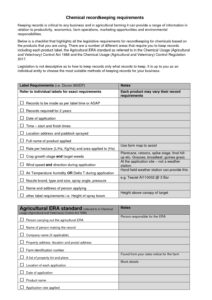In recent weeks during the grower assessment and review processes, there has been many questions and concerns raised about swapping of products with the same active ingredient. In response to the this, we have developed a very simple tool that provides a guide to the different levels of product restrictions with the same actives for different chemical brands or companies. Please feel free to share this with your clients.
Please note and be aware that these restrictions can change at any time with label updates and further APVMA approvals. We have only used a random selection of products to demonstrate the different restrictions and the comparisons between certain actives. This is not an exhaustive list so please feel free to add additional products or update as label restrictions change.
I have also attached a copy of the recordkeeping requirements for all Agricultural Chemicals.
If you have any questions regarding this, please feel free to contact.
Cheers!
Andrew
| Pesticide Project Team
Plant Biosecurity & Product integrity Biosecurity Queensland Department of Agriculture and Fisheries —————————————————————————————————- T 07 4999 8567 M 0436 612 296 E [email protected] W www.daf.qld.gov.au Mackay Office, 30 Tennyson St, Mackay QLD, 4740. P.O. Box 668, Mackay QLD 4740 Customer Service Centre 13 25 23
|

